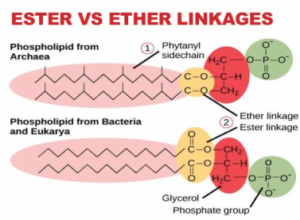What is the difference between ester and ether?
All organic molecules contain oxygen atoms. The core difference between ester and ether is that ester has –O- linkage while ether has –COO linkage.
The lesson provides detailed insight on how to remember the difference between ester and ether in terms of structure, functionality, nomenclature, derivation, and symmetry.

What is Ester?
Ester is an organic compound formed by a reaction between a carboxylic acid with an alcohol. The chemical formula of the ester is written as RCOOR’.
The derivate of alcohol is written as the prefix while that of the acid as a suffix. The esters are polar molecules and they have low boiling points.
Characteristics of Esters
- Slightly soluble in water
- Have polar molecules
- Have low boiling points
- Have a pleasant fruity smell
- Have a double bond between carbon and oxygen atoms
What Is Ether?
Ether is an organic compound that contains a carbon oxygen-carbon bond. Intermolecular dehydration of alcohol can help in the formation of ether.
The functional group of ether is ROR e.g. Ethoxypropane. The compound contains two small alkyl groups attached to single oxygen.
Characteristics of Ethers
- Obtained from alcohol
- Have a single bond between carbon and oxygen atoms
- Have a symmetrical structure
- Can dissolve both polar and nonpolar compounds
- Soluble in water
- Have a strong smell
Comparison Chart: Ester vs Ether
| Basic Terms | Ester | Ether |
| Meaning | It is an organic compound formed by reacting a carboxylic acid with an alcohol. | It is an organic compound that contains a carbon oxygen-carbon bond. |
| Functionality | Have a carbonyl group | Do not have a carbonyl group |
| Nomenclature | RCOOR’ | ROR |
| Derivation | Carboxylic acids | Alcohols |
| Symmetry | Do not have symmetrical structures | Have symmetrical structure |
| Odor | Fruity smell | Strong smell |
| Stability | Quite stable | Less stable |
| Reactivity | Are highly reactive | Have low chemical reactivity |
| Boiling point | Have a high boiling point | Have a low boiling point |
| Solubility | Slightly soluble in water | Soluble in water |
| Application | Manufacture of synthetic flavors, perfumes, and cosmetics | Manufacture of anesthetic, production of cocaine and diesel |
| Bond Type | Double bond | Single bond |
| Examples | Ethyl ethanoate, ethyl propanoate, propyl methanoate, propyl ethanoate, and methyl butanoate. | Diethyl ether, methyl ethyl ether, and diphenyl ether. |
Core Difference between Ether and Ester
- Ester is organic compounds formed by reacting a carboxylic acid with alcohol while ether is organic compounds that contain carbon oxygen-carbon bond.
- Ester has a functional group of carbonyl group while ether do not have carbonyl group, functional group
- The nomenclature of ester has RCOOR’ while that of ether has ROR
- Esters are derived from carboxylic acids while ether is derived from alcohols
- Ester does not have a symmetrical structure while ether has a symmetrical structure
- Ester has a fruity smell while ether has a strong smell
- Ether compound are less stable while ester compounds are quite stable
- Ester is quite reactive while ether is less reactive
- Ester has a high boiling point while ether has a low boiling point
- Ester is slightly soluble in water while ether is soluble in water
- Ester has double bond while ether have a single bond
- Esters are used in the food industry while ether is used in the drug industry and as a solvent
- Esters can easily be polarized while ether cannot be polarized
- Examples of esters are ethyl ethanoate, ethyl propanoate, propyl methanoate, propyl ethanoate, and methyl butanoate while that of ether are diethyl ether, methyl ethyl ether, and diphenyl ether.
Read More: Difference between Solvent and Solute
Comparison Video
https://youtu.be/vhiP-k7SBws
Summary
The core difference between ester and ether is that ester is an organic compound formed by reaction carboxylic acid with alcohol while ether is an organic compound that contains carbon-oxygen-carbon atoms.